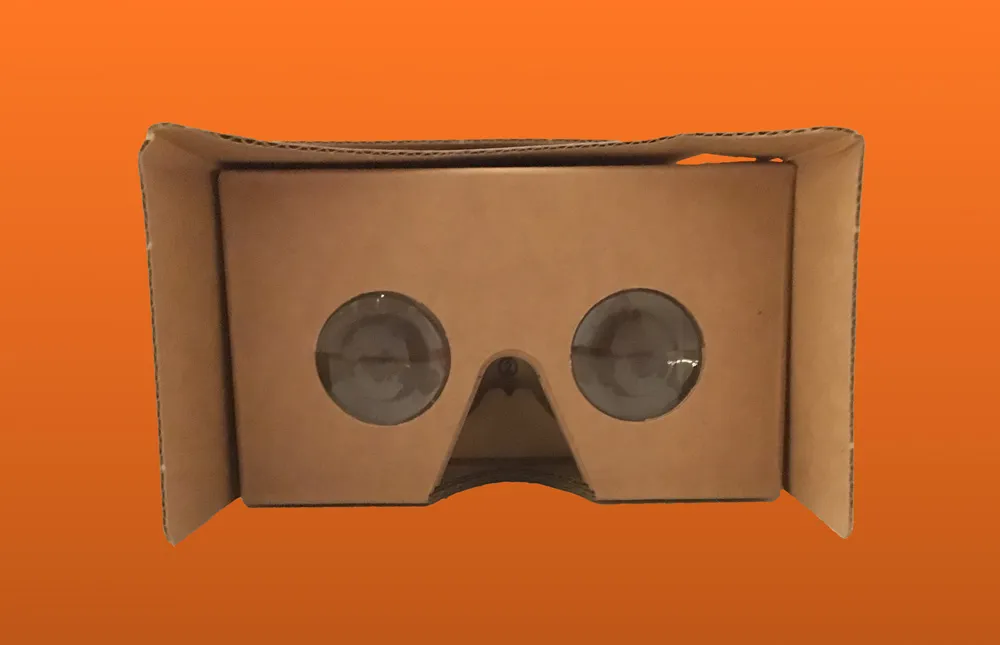 There is a lot of hate directed toward Google’s Cardboard VR viewer within the enthusiast community. Many point to the lack of quality when compared to dedicated VR setups saying that they worry the experience will “poison the well” for VR. They aren’t totally wrong. Google Cardboard lacks the internal hardware present on the Gear VR, for example, that helps to improve the comfort of the experience. But just because it isn’t as good doesn’t make it bad, not in the grand scheme of things.
There is a lot of hate directed toward Google’s Cardboard VR viewer within the enthusiast community. Many point to the lack of quality when compared to dedicated VR setups saying that they worry the experience will “poison the well” for VR. They aren’t totally wrong. Google Cardboard lacks the internal hardware present on the Gear VR, for example, that helps to improve the comfort of the experience. But just because it isn’t as good doesn’t make it bad, not in the grand scheme of things.
Google Cardboard will never be “The” VR headset to own but that never has been its purpose. It’s real purpose is to bring VR to the masses, and that is exactly what it is doing. The Cardboard is like the movie trailer for the VR industry, you don’t get the whole thing but you get a sense of what it could be. And oftentimes a taste is all you need.
Cardboard helps to solve one of VR’s biggest problems
Virtual reality’s biggest problem, as many have pointed out, is that you really have to see it to be able to understand it. You can ask people to come to a store to try it out and maybe you will get a few, but let’s face it, for years now more and more consumers are turning to shopping online, so getting a mass-adoption-sized audience to visit their local Best Buy or Gamestop to try VR for the first time is difficult. Even out-of-home marketing events like the HTC Vive’s ‘world tour’ only end up reaching at most a couple thousand people at once.
Cardboard, on the other hand, is cheap enough to produce that Google is able to literally give them away, which they have been doing. A lot. Just this month, Google partnered with the New York Times to distribute over 1 million of the devices to people across the country. And for a lot of those people, the experience was quite enjoyable:
For all you NYT VR cynics: I just got to witness my 78-year-old grandma use it and it took her breath away and that alone is an A+ purpose.
— Brennan Carley (@BrennanCarley) November 8, 2015
I am a 75 year old tecchie and I was totally amazed with the NYT VR. Great to look up, down and around. Awesome! https://t.co/uGvZnzkhzf
— Ron Thomas (@ronnert) November 8, 2015
I wanted to be cynical about this NYT VR app. But it’s really hard. Amazing use of tech to tell stories. https://t.co/5BAYgUbwnt
— Jamie Conway (@jsconway) November 8, 2015
.@nytimes NYT VR gets the mom seal of approval. “I feel like I’m there.” pic.twitter.com/vmifk3pqlh
— E. Quinn Libson (@quinnlibson) November 8, 2015
Woke up this morning and took a trip to Lebanon, Ukraine, and Sudan. Learned, cried. Future of journalism. #NYTVR pic.twitter.com/CZP3qqUjR9
— Udi Ofer (@UdiACLU) November 7, 2015
Thanks @nytimes, it’s been awhile since I’ve sobbed into a cardboard box. #NYTVR
— Topher McCulloch (@mugwumpian) November 8, 2015
All of that from Cardboard, literal cardboard. That in and of itself is telling to a consumer with half a brain. No one is going to pick up a Cardboard and say that it is capable of the same experience as an Oculus Rift, for example, which will cost upwards of forty times more than the Cardboard.
That first hit from the proverbial VR crack pipe has lead to an increase in usage on Google’s VR apps. According to a Google PR representative, the official Cardboard app “saw a record number of installs” after the New York Times stunt. And it wasn’t just Google’s app that saw a spike, Jaunt VR saw an 87% increase in usage on their app in the week following the event. Littlstar, a 360º video streaming app, saw “increased downloads” as well. After spending an average of 14.7 minutes inside the NYT VR app people didn’t toss their Cardboards in the trash, they sought more.
The proof is in the pudding, Google Cardboard is helping people to get hooked on VR, or at least 360º video.
360º video is a transitional medium just as much as the Google Cardboard is a transitional technology. Both represent important steps towards the eventual goal. For 360º video, it is likely a blending of computer graphics with live-captured light field images, for Cardboard it is true VR experiences like the one you get from the best modern wired headsets.
Google themselves see this to be the case. “We have ambitions beyond just Cardboard,” Google’s VR Head Clay Bavor told Wired. “There are many other things going on.” One of those things is the goal to standardize Android chipsets on phones across the ecosystem, quite possibly with VR in mind – especially with reports that Google is working on a VR version of Andriod.
Cardboard will never be an ideal experience, not until all the necessary hardware is built into the phone itself at least, but it is not the horrendous, motion sickness inducing, well-poisoner that some are making it out to be. It’s time to stop criticizing Google Cardboard for what it isn’t and start praising it for what it is, the most accessible piece of in-home advertising the virtual reality industry has right now.






























